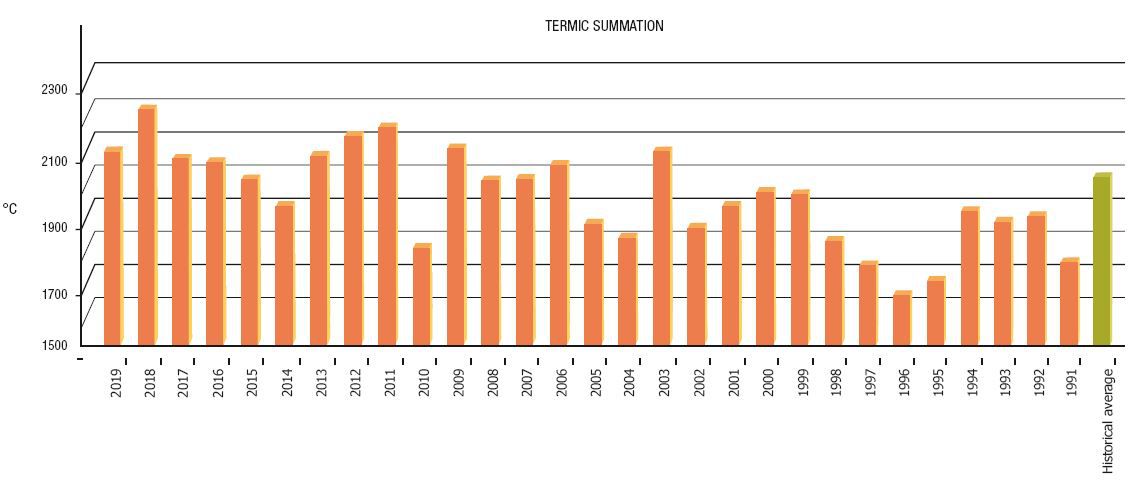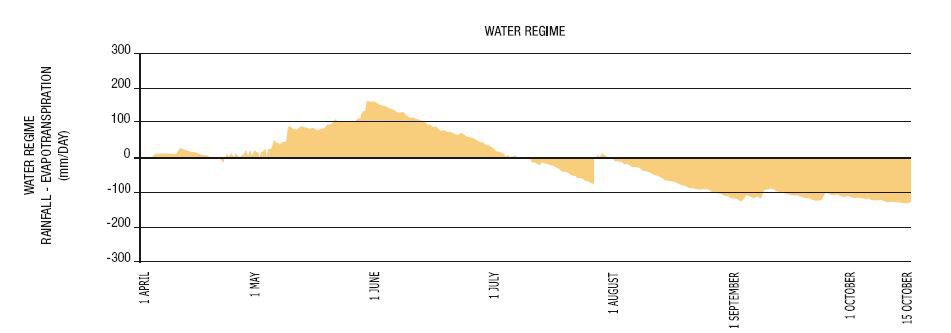VINTAGES
VINTAGE 2019
2019 GROWING YEAR
The 2019 season was marked by alternating favourable and unfavourable weather conditions that in the end resulted in an overall lower crop from our vineyards.
WEATHER CONDITIONS
A winter within the norm brought a slightly early weeping stage to the vines, on 21 March, then a lack of sudden temperature drops led to budbreak in early April for the early-developing varieties.
Cold and rain in May, however, were quite adverse to shoot development, almost halting leaf growth, and on 5,6, and 7 May we ran serious risk of a late freeze, a phenomenon that had never before happened so late in the season. The entire month of May, in fact, was marked by rains and severe temperatures, with snowfall down to the lower elevations in the nearby pre-Alps. These conditions blocked shoot growth and created a slightly unbalanced nutritional cycle and ineffective photosynthesis. Late May saw the start of flowering in the earlier-ripening grapes (Chardonnay), but weather conditions continued cool and wet. As flowering progressed, the weather improved, with almost summertime temperatures, which benefited in particular the later-ripening Tocai, Malvasia, and Merlot, but resulted in looser clusters for Chardonnay, Sauvignon Blanc, Pinot Grigio, and Pinot Noir above all. Fine weather predominated in June, even fairly hot and dry in mid-month, leading to excellent canopy pigmentation and development, a sign of equally significant root functioning and photosynthetic activity. Fruit set was slightly behind the norm by 1-2 weeks. Temperatures of 36-38oC were definitely higher than historical averages, and some heat stress started to appear. But temperatures then dropped in the first part of July, particularly in the second week, when a few fairly-light rainstorms refreshed the air. One episode worth remarking was a hailstorm on 13 July, which damaged canopies in some vineyards. This unfortunate occurrence was followed by plenty of sun and excellent day-night temperature differentials of 16-330C, although overall development was at this point behind by some 10 days compared to recent years. Thanks to this providential dry, sunny period, the wounds on the berries caused by the hail healed nicely, and the apical section of the canopies, which had suffered under previous conditions, developed new leaves. Fine weather continued into August, even if quite dry. Although this latter favourable period caught up some of the delay in the development cycle, the overall vine growth and crop development cycle was 9 days longer than the average and a full 12 days than the previous 2018 season.
WATER AVAILABILITY AND VINEYARD MANAGEMENT
A cold, rainy spring, a hot, dry summer, and an episode of hail were the main factors that determined a lower crop for the 2019 season. Providentially outstanding weather in late August and September resulted in fine balance between acids, sugars, and aroma precursors in the grapes. Although the ripening process was rather slow, continued fine weather brought good phenolic ripeness, even for red varieties such as Merlot.






